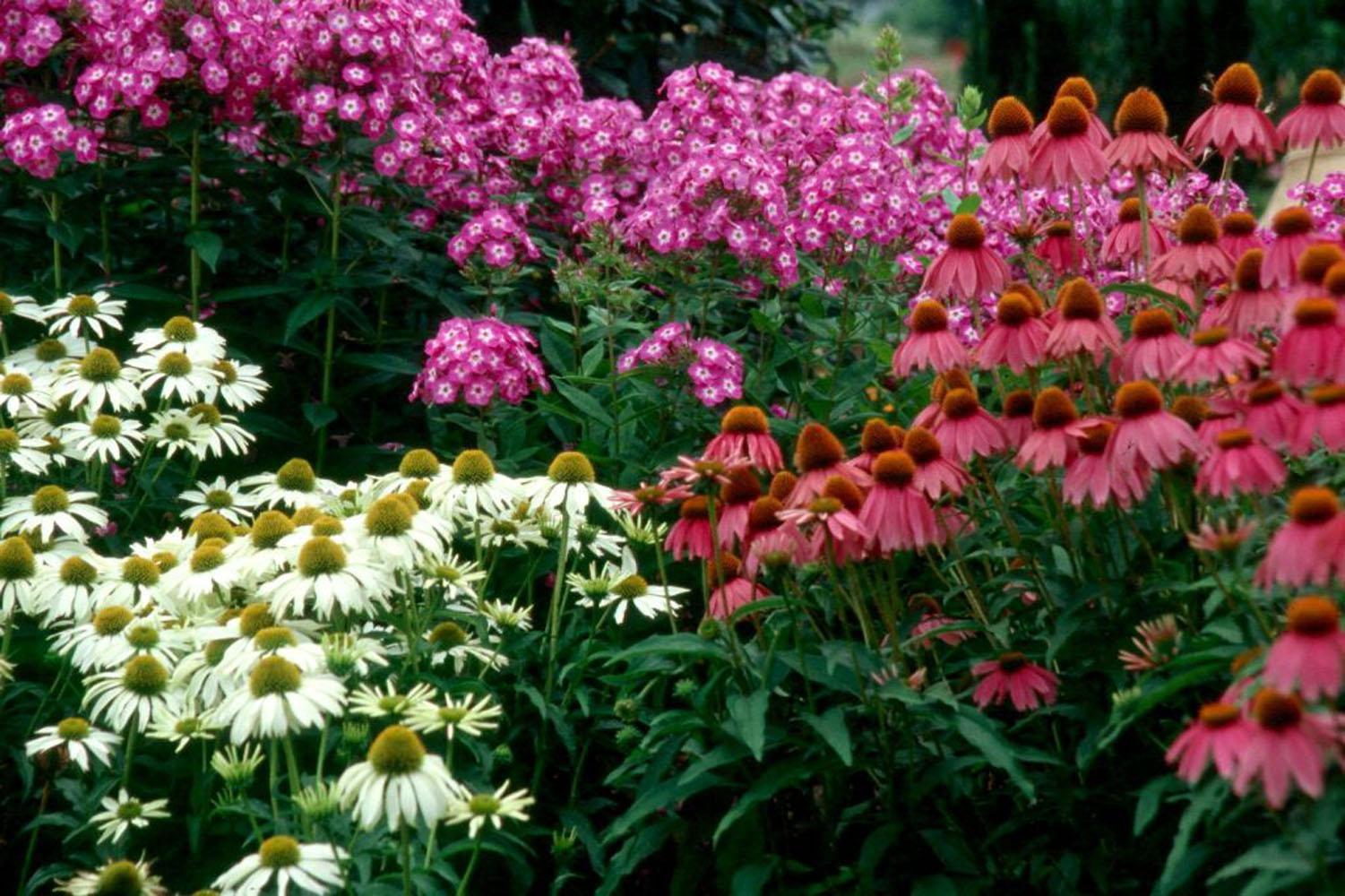Information Possibly Outdated
The information presented on this page was originally released on February 26, 2004. It may not be outdated, but please search our site for more current information. If you plan to quote or reference this information in a publication, please check with the Extension specialist or author before proceeding.
Kim's Mophead proves name is unimportant
By Norman Winter
MSU Horticulturist
Central Mississippi Research & Extension Center
My imagination runs wild when I think about a white coneflower I saw last summer. I can picture a man saying, "Honey, I got a new white coneflower and I am going to name it after you -- Kim's Mophead."
I suppose it didn't happen that way, but it sure would be fun to think so. If so, that was probably the last flower he named -- right after Kim's Knee High, a more traditional but shorter purple coneflower.
Despite the references to bad hair days and stockings, purple coneflowers are really great perennials for the South, and we are very close to planting season.
Early spring is my favorite time to plant purple coneflowers, known botanically as Echinacea. Select a healthy, growing transplant in a 4-inch container for the best chance at success. These small plants without buds are still producing roots and green leaves and will be happy in your garden. The same is true for rudbeckias, Shasta daisies and coreopsis.
Choose a site in full sun for best flower performance. I assume many of you have soil like mine that takes a small stick of dynamite or a jackhammer to break apart. We can assist the happiness of the plants greatly by incorporating 3 to 4 inches of organic matter and tilling it in.
While tilling, go ahead and work in 2 pounds of a slow-release, 12-6-6 fertilizer per 100 square feet of bed space. Space your plants about 2 feet apart. A teardrop-shaped drift will look awesome once they are blooming. Rudbeckias, coreopsis, Shasta daisies, salvias and angelonias make nice companion plants. Buddleias and lantanas also combine well.
Try purple coneflowers with purple fountain grass or some of the miscanthus for a real showy display. If your garden club members see this, they will think you went to some specialized training program during your vacation.
Often you find the purple coneflower sold generically, but the Perennial Plant Association named Magnus purple coneflower as its Perennial Plant of the Year in 1998. Magnus was selected for its vibrant, rose-purple flowers and is a real winner in the garden. Its petals remain horizontal rather than drooping toward the ground.
Bravado is another variety that you may want to try. I am much impressed with this selection that has large 4- to 5-inch flowers with a wonderful fragrance, particularly in the morning.
But you may really want to try Kim's Knee High, which is a dwarf compared to Bravado and Magnus, hitting right around knee high in height. Despite the terrible name, Kim's Mophead is a doggone good white selection.
Landscapes dedicated to wildlife will benefit from coneflowers, which attract butterflies like the Painted Lady and birds that eat their seeds.
Purple coneflowers are also great as cut flowers. If you let one get past its prime, simply pick the petals off and use the brown cone in the vase. Don't throw the arrangement away when you're finished. Let the flowers dry completely and then scatter the seeds around for a denser planting.
I try to preach patience when growing perennials and roses -- they get better with a little age. The same is true with purple coneflowers: more flowers are produced in the second and third years.
Purple coneflowers are perennials with clumps that can be divided in the fall if necessary. This may not need to be done for three or more years. It also can be propagated from its own seed.
After you grow purple or white coneflowers for a few years, you will wonder how someone could name such a pretty flower a mophead. At least they didn't stick the word "weed" on the end of it!



